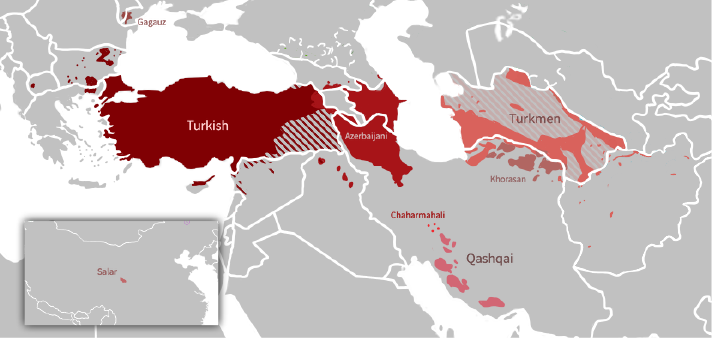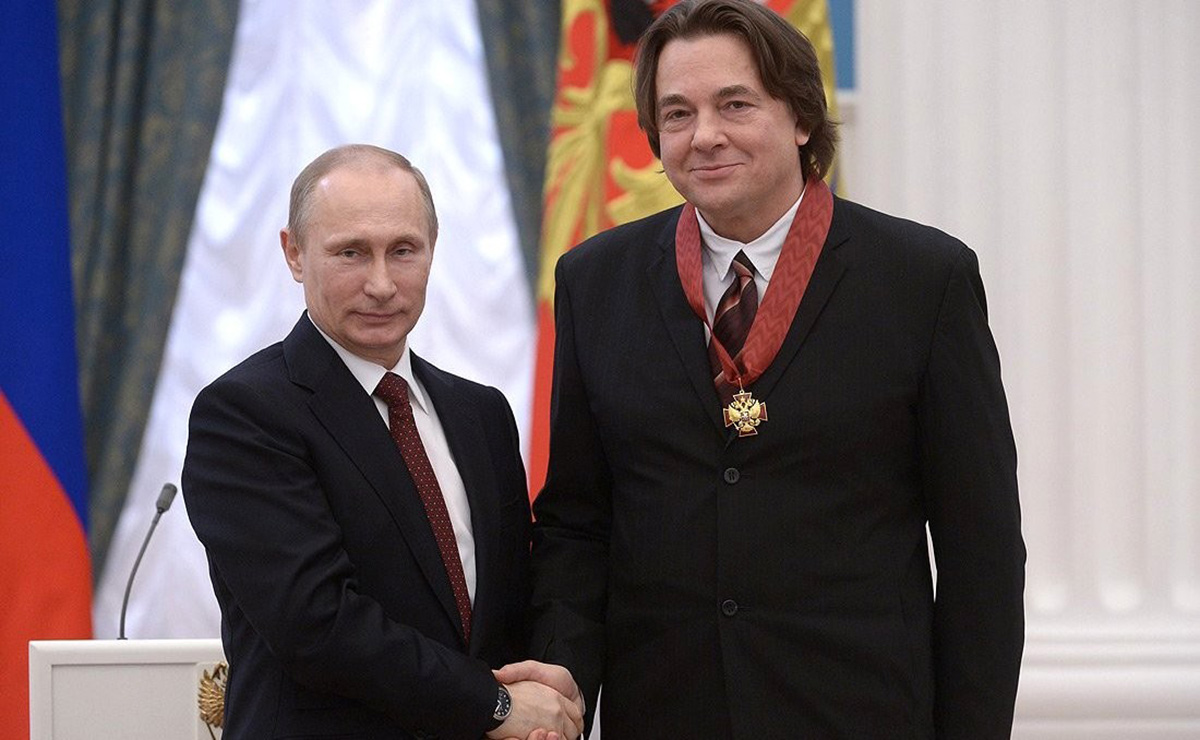|
Altyn Asyr (TV Channel)
Altyn Asyr, meaning "Golden Age" in Turkmen, is one of the eight television channels owned by the Government of Turkmenistan. It is mainly focused on broadcasting the news in Turkmenistan. The Watan Habarlary newscast airs six times a day (7:00, 9:00, 12:00, 15:00, 21:00 and 23:00). The channel's TV startup is at 7:00, while the closedown is usually at 1:00, averaging 18 hours on air.''Türkmenistan Watan'', 21-27 January 2023 Other programs include Diýar, which has separate editions covering each of the regions of Turkmenistan as well as programs on agriculture and technology. Feature films are broadcast at 23:30 on weekends, after the late edition of Watan Habarlary. Watan Habarlary frequently repeats stories from the previous night in its morning editions. The Altyn Asyr's clock ident is the same as all other news channels excluding the Türkmen Owazy and Aşgabat channels. History Television arrived to Ashgabat, the capital of the Turkmen SSR, in 1959, with a transmitter ... [...More Info...] [...Related Items...] OR: [Wikipedia] [Google] [Baidu] |
Politics Of Turkmenistan
The politics of Turkmenistan nominally takes place in the framework of a presidential republic, whereby the President of Turkmenistan is nominally both head of state and head of government. However, as of 21 January 2023 a "national leader" was appointed who chairs an independent People's Council (''viz.'') with authority to amend the constitution, and who exercises supreme political authority. No true opposition parties are allowed; every registered political party supports the third and current President Serdar Berdimuhamedow. The country is frequently described as a totalitarian state. Political background After 69 years as part of the Soviet Union (including 67 years as a union republic), Turkmenistan declared its independence on 27 October 1991. President for life Saparmurat Niyazov, a former bureaucrat of the Communist Party of the Soviet Union, ruled Turkmenistan from 1985, when he became head of the Communist Party of the Turkmen SSR, until his death in 2006. He r ... [...More Info...] [...Related Items...] OR: [Wikipedia] [Google] [Baidu] |
Ashgabat
Ashgabat (Turkmen language, Turkmen: ''Aşgabat'') is the capital city, capital and largest city of Turkmenistan. It lies between the Karakum Desert and the Kopet Dag, Kopetdag mountain range in Central Asia, approximately 50 km (30 mi) away from the Iran-Turkmenistan border. The city has a population of 1,030,063 (2022 census). The city was founded in 1881 on the basis of an Ahal Teke (Turkmen tribe), Teke tribal village, and made the capital of the Turkmen Soviet Socialist Republic in 1924 when it was known as Poltoratsk. Much of the city was destroyed by the 1948 Ashgabat earthquake, but has since been extensively rebuilt under the rule of Saparmurat Niyazov's "White City" urban renewal project, resulting in monumental projects sheathed in costly white marble. The Soviet-era Karakum Canal runs through the city, carrying waters from the Amu Darya from east to west. Today, as the capital of an independent Turkmenistan, Ashgabat retains a multiethnic population, wi ... [...More Info...] [...Related Items...] OR: [Wikipedia] [Google] [Baidu] |
Turkmenistan
Turkmenistan is a landlocked country in Central Asia bordered by Kazakhstan to the northwest, Uzbekistan to the north, east and northeast, Afghanistan to the southeast, Iran to the south and southwest and the Caspian Sea to the west. Ashgabat is the capital and largest city. It is one of the six independent Turkic states. With a population over 7 million, Turkmenistan is the 35th most-populous country in Asia and has the lowest population of the Central Asian republics while being one of the most sparsely populated nations on the Asian continent. Turkmenistan has long served as a thoroughfare for several empires and cultures. Merv is one of the oldest oasis-cities in Central Asia, and was once among the biggest cities in the world. It was also one of the great cities of the Islamic world and an important stop on the Silk Road. Annexed by the Russian Empire in 1881, Turkmenistan figured prominently in the anti-Bolshevik movement in Central Asia. In 1925, Turkmenistan be ... [...More Info...] [...Related Items...] OR: [Wikipedia] [Google] [Baidu] |
Turkmen Language
Turkmen (, , , or , , , ) is a Turkic language of the Oghuz branch spoken by the Turkmens of Central Asia. It has an estimated 4.7 million native speakers in Turkmenistan (where it is the official language), and a further 359,000 speakers in northeastern Iran and 1.2 million people in northwestern Afghanistan, where it has no official status. Turkmen is also spoken to lesser varying degrees in Turkmen communities of Uzbekistan and Tajikistan and by diaspora communities, primarily in Turkey and Russia. Turkmen is a member of the Oghuz branch of the Turkic languages. It is closely related to Azerbaijani, Gagauz, Qashqai, and Turkish, sharing varying degrees of mutual intelligibility with each of those languages. However, the closest relative of Turkmen is considered Khorasani Turkic, spoken in northeastern regions of Iran and with which it shares the eastern subbranch of Oghuz languages, as well as Khorazm, the Oghuz dialect of Uzbek spoken mainly in Khorezm along the ... [...More Info...] [...Related Items...] OR: [Wikipedia] [Google] [Baidu] |
Regions Of Turkmenistan
Turkmenistan is divided into five regions, or ''welaýatlar'' (singular ''Wilaya, welaýat'') and one capital city (''şäher'') with provincial legal status. They are Ahal Region, Ahal, Balkan Region, Balkan, Daşoguz Region, Dashoguz, Lebap Region, Lebap and Mary Region, Mary, plus the capital city of Ashgabat. Each province is divided into Districts of Turkmenistan, districts. As of 20 December 2022 there were 37 districts (), 49 cities (), including 7 cities with district status (), 68 towns (), 469 rural councils (rural municipal units, ) and 1690 villages (rural settlements ) in Turkmenistan. The regions are also translated as ''oblasts'', which were also the Subdivisions of the Soviet Union, administrative divisions of the Turkmen Soviet Socialist Republic, a republic of the Soviet Union, which retained the system after independence in 1991. Capital city The capital city of Turkmenistan is Ashgabat, which is an administrative and territorial unit with provincial autho ... [...More Info...] [...Related Items...] OR: [Wikipedia] [Google] [Baidu] |
Clock Ident
A clock ident is a form of television ident in which a clock is displayed, reading the current time, and usually alongside the logo of that particular television station. Clock idents are typically used before news bulletins and closedown, though in the past quite commonly preceded regular programming. In the United Kingdom, clock idents are also associated with schools programming. Appearance Clock idents are typically displayed as an analogue clock, although some broadcasters have experimented with digital clocks. In particular, during the 1970s and 1980s, many ITV regions in the UK adopted digital clock designs, which are overlaid onto a coloured card using CSO. The backgrounds were generally static, but some clocks had movement. For example, Associated-Rediffusion had a spinning Adastral. The final clocks from 1995 to 1998, used by RTÉ One and RTÉ Two, were overlaid onto a video background. The first station clocks were mechanical, but were converted to an electronic ... [...More Info...] [...Related Items...] OR: [Wikipedia] [Google] [Baidu] |
Türkmen Owazy
Türkmen Owazy ('Turkmen Melody') is a Turkmen music TV channel, broadcasting since 2009 in the Turkmen language. As with other channels of Turkmenistan, it is under the control Coordinating Council for Television and Radio Broadcasting of the Cabinet of Ministers of Turkmenistan. The channel was created to promote Turkmen national musical culture and to acquaint people with the latest developments in this field. It also promotes aesthetic education and harmonious development of Turkmen youth. The channels headquarters are located in Ashgabat. History In early December 2008 at a government meeting, Turkmen president Gurbanguly Berdimuhamedov signed a decree "to promote the art of music and culture of the Turkmen people and world public awareness of the successes of the country, to further enhance the impact of information systems", establishing a Turkmen TV channel Turkmen Owazy. In January 2009, the TV channel Turkmen Owazy began to broadcast via Russian satellite Yamal-201. B ... [...More Info...] [...Related Items...] OR: [Wikipedia] [Google] [Baidu] |
Aşgabat (TV Channel)
Aşgabat is a Turkmen state-run channel that specializes in the national capital. The channel broadcasts for sixteen hours on average (7:00 to 23:00). Fixed programming is limited to nine daily Habarlar bulletins (7:00, 9:00, 11:00, 13:00, 15:00, 17:00, 19:00, 21:00, 22:30) and Ýol hereketiniň howpsuzlygy — ömrümiziň rahatlygy (Road Safety is the Comfort of Our Life), a prevention program. The rest of the schedule consists of blocks of specialized programming, mostly social and political.''Türkmenistan Watan'', 21-27 January 2023 The channel shares much of its output with Altyn Asyr. History In early February 2011, President of Turkmenistan Gurbanguly Berdimuhamedow Gurbanguly Mälikgulyýewiç Berdimuhamedow (born 29 June 1957) is a Turkmen politician and former dentist who is currently the chairman of the People's Council of Turkmenistan. He previously served as the second president of Turkmenistan from ... announced the creation of the Aşgabat channel with the ... [...More Info...] [...Related Items...] OR: [Wikipedia] [Google] [Baidu] |
Channel One Russia
Channel One ( rus, Первый канал, r=Pervý kanal, p=ˈpʲervɨj kɐˈnal, t=First Channel) is a Russian Television in Russia, federal television channel. Its headquarters are located at Ostankino Technical Center near the Ostankino Tower in Moscow. The majority of its shares are owned or indirectly controlled by the state. It was created by decree of Russian president Boris Yeltsin to replace Ostankino Television Channel One, which in turn replaced Programme One in 1991. From April 1995 to September 2002, the channel was known as Public Russian Television (, ORT ). The main news programmes are ''Vremya'' and ''Novosti (TV program), Novosti''. Channel One's main competitors are the Russia-1 and NTV (Russia), NTV channels. The channel has 2,443 employees as of 2015. History When the Soviet Union was abolished, the Russian Federation took over most of its structures and institutions. One of the first acts of Boris Yeltsin's new government was to sign a Decree of the ... [...More Info...] [...Related Items...] OR: [Wikipedia] [Google] [Baidu] |
Television Channels And Stations Established In 1959
Television (TV) is a telecommunication medium for transmitting moving images and sound. Additionally, the term can refer to a physical television set rather than the medium of transmission. Television is a mass medium for advertising, entertainment, news, and sports. The medium is capable of more than "radio broadcasting", which refers to an audio signal sent to radio receivers. Television became available in crude experimental forms in the 1920s, but only after several years of further development was the new technology marketed to consumers. After World War II, an improved form of black-and-white television broadcasting became popular in the United Kingdom and the United States, and television sets became commonplace in homes, businesses, and institutions. During the 1950s, television was the primary medium for influencing public opinion.Diggs-Brown, Barbara (2011''Strategic Public Relations: Audience Focused Practice''p. 48 In the mid-1960s, color broadcasting was introd ... [...More Info...] [...Related Items...] OR: [Wikipedia] [Google] [Baidu] |




